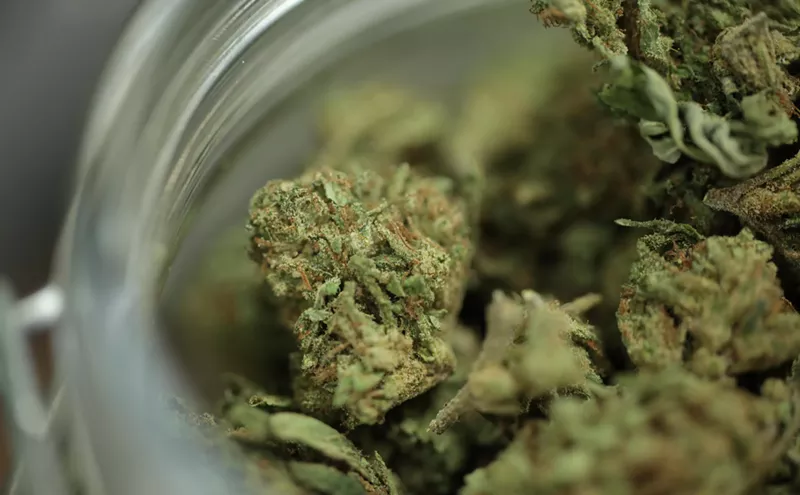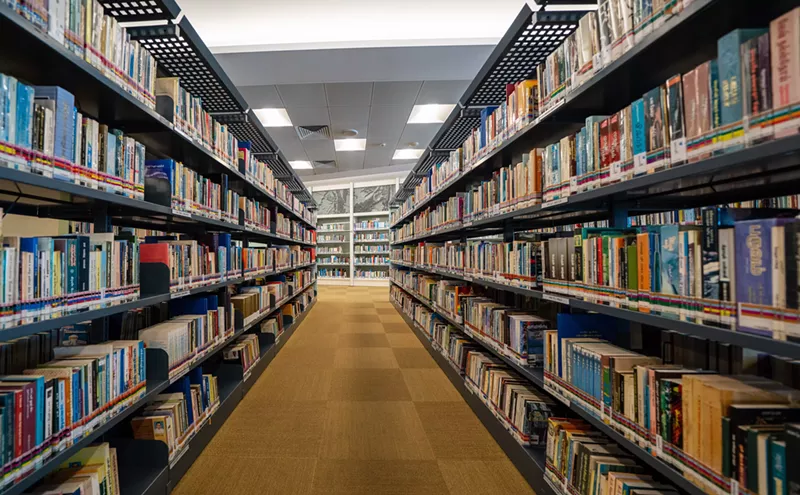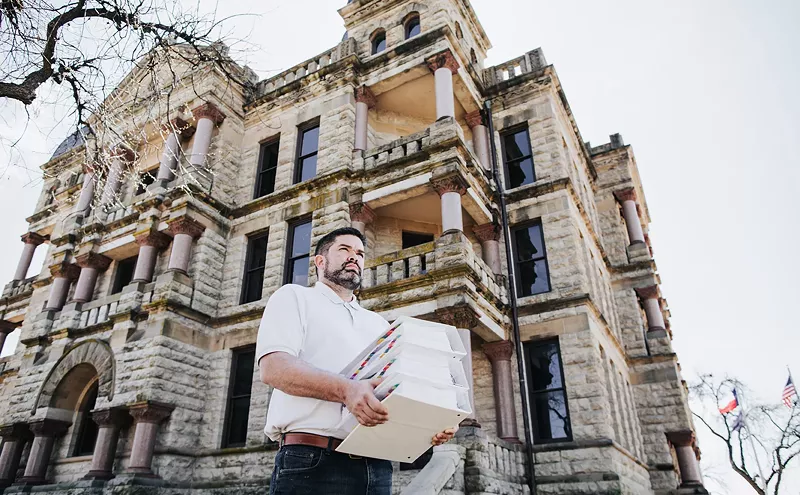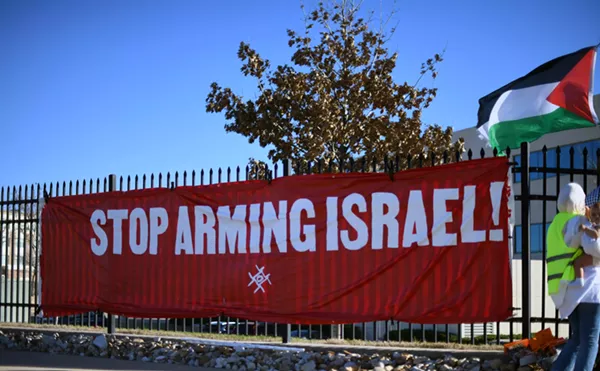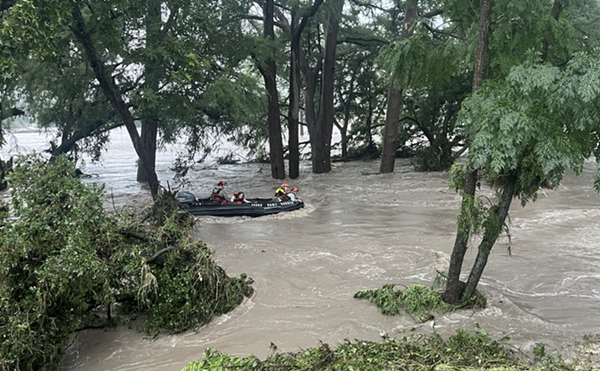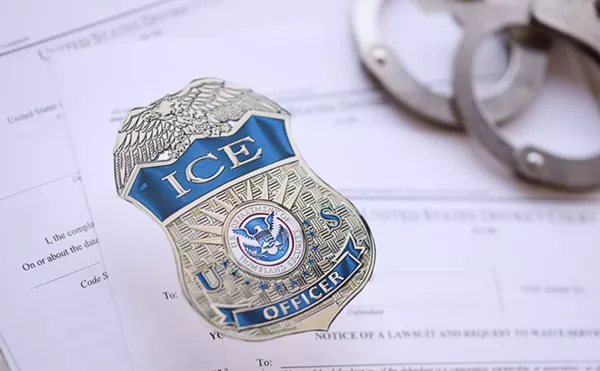"I believe in evil spirits and good spirits, but I also believe the spirit in me is greater than the spirit in that pot."
In the cramped squad room of the Hutchins police headquarters 10 miles south of downtown Dallas, Owens spread pictures of the voodoo pot on a lunch table. She told me: "My grandmother was an old Cajun healer in Thibodaux (in Lafourche Parish, 45 miles southwest of New Orleans). I've seen some of this, but I don't know much about voodoo. I just recognized it was the real thing, not kids' play."
The pot was discovered a short distance from the bodies of Luis Campos, 20, and his intended bride, Linoshka Torres, 18, found by Dallas police in late January near Dowdy Ferry Bridge.
The bridge is a lonely half-mile expanse linking the small community of Hutchins with the muddy, densely forested, sparsely populated Trinity River flood plain. The pot and bodies were on opposite banks of the river. The area is a frequent dumping ground for murder victims.
Police have said the young lovers may have been victims of mistaken identity in a drug-related feud. A Dallas Morning News story soon after the bodies were found said: "Detectives stressed that there is no connection between the killings and the shrine. And religious scholars said that despite stereotypes, there is no element of human sacrifice in Palo Mayombe or other Afro-Caribbean religions, such as Santeria or voodoo."
The story also quoted a Santeria priest in Miami who said his religion had been unfairly linked to events such as the Mark Kilroy murder in Matamoros in 1989, which he said did not involve true Santeria.
The moment I read it, I knew that much was wrong. And the moment I saw Detective Owens' photos, I knew she was right.
Look, I understand why the academics and the priest want to defend these beliefs from an automatic association with crime. All kinds of racism, bigotry and ethnocentric foolishness often deform the way dominant white culture views non-European belief.
But we also need to not kid ourselves. This stuff is often closely wrapped with crime, and as a motivational and disciplinary force it can be very powerful.
Adolfo de Jesus Constanzo, the witch doctor in the Kilroy case, was the real deal. His version of voodoo is frequently associated with the drug trade and definitely involves human sacrifice. I wrote a book about the Kilroy case, Cauldron of Blood: the Matamoros Cult Killings, when it happened. My book was journalism and did not qualify me as an expert. But I did go back this week and review some of my research, and I also called some Drug Enforcement Administration people who keep up with these things.
The people I called said various forms of Afro-Cuban belief, lumped together as "voodoo" by outsiders, continue to be associated with crime in general and drugs in particular.
What Detective Owens showed me in Hutchins the other day was the genuine item. The object found beneath Dowdy Ferry Bridge is a prenda or nganga almost certainly devoted to the god Lucero Mundo, "Star of the World" in English, who is the New World incarnation of Lukumí Eleguá, the central messenger-intermediary figure or savior in the Congolese religious beliefs that have become Palo Monte, Mayombe, Brillumba and Regla Kimbisa in Cuba and other parts of Latin America.
The Dowdy Ferry nganga contained a human skull. Owens said the presence of certain molds and lichens on the skull indicate it came from a grave. The nganga also contained exactly the right number and combination of palos or sticks protruding from it in the proper patterns, the presence of iron and mercury, railroad spikes, patterns of wrapping and color to prove this nganga was put together by someone who knew what he or she was doing.
It's true these beliefs have no necessary connection with crime. But because of the way the religions operate, they come in handy if you happen to be a drug dealer and you're having a problem.
The beliefs came to Cuba and South America from West Africa with the slave trade. In the New World the beliefs morphed and evolved to incorporate the experience of slavery. Each nganga contains a small army of slave souls that can be commanded, normally, by the particular warrior god who rules each pot. Sometimes there is trouble in the pot and the slaves rebel, but normally they can be counted on to do as they are told.
Detective Owens, 43, has a master's degree in clinical psychology and is a quick hand at research. She has disassembled the pot and carefully analyzed each of the objects in it, comparing them with texts and illustrations. She is also in contact, she said, with experts who have been able to help her. She told me she has already figured out that the pot from Dowdy Ferry is a Lucero Mundo nganga. She is continuing to do research to see if it is ruled over by Zarabanda or Siete Rayos, two warrior gods associated with the West African gods, Ogún and Shangó.
These religions appeal to criminals, as well as to honest people, because of the power they promise. When you enlist the services of a priest who owns or controls an nganga, you can pay him or her to send the slave souls out as spiritual bodyguards to protect you. On the other hand, you can ask the priest to send the souls out as goons or killers to harm your enemies. Hence, the handy connection with criminals.
I talked to Julio Mercado, now in the corporate security world, who was the regional DEA director in Dallas in the late 1990s (See "Busted," by Christine Biederman, Dallas Observer, July 10, 1997). He hasn't kept up with the drug world since leaving the DEA several years ago, but he assured me that Afro-Cuban beliefs and Mexican Santeria practices were closely associated with drugs when he was still a cop.
"We used to see it all the time," he said.
I talked to an agent who is with the DEA now, who spoke to me on the condition that I not use his name, because he is still involved in undercover work.
"We first started seeing it when the Marielitos [refugees who fled from the Cuban port of Mariel in 1980] came in."
He told me that the Zetas, a vicious Mexican drug gang, are present in the Dallas area. "Yeah, the Zetas are up here, and so is the Gulf Coast Cartel."
I had asked because the Zetas have been reported to have a particular connection with Palo Mayombe.
The agent told me that Mexican immigrant criminals in general are often found to practice variant forms of Santeria, another Afro-Cuban offshoot of Lukumí belief.
"You can talk to anybody who's working drug-related homicides and they'll tell you the same thing."
Before going to work for the DEA, he was a detective on a large urban police force. "Where we used to see all this Santeria stuff, we would go in houses and run search warrants, and we would find little altars.
"Now I never found or saw anything as elaborate as this deal they found down in south Dallas. I never saw any human remains or anything. But it was real common to find little altars where they would have little army men, except they were policemen that you could buy at a five-and-dime store. And you would find them in there burning. And you'd find little police cars burning.
"It was all kind of mumbo-jumbo. But what we have found out from interviewing these people, they're not dumb people, but a lot of them came from real rural areas of Mexico. They're undereducated and superstitious."
This stuff is all over Dallas. The display window at Chango Botanica in Oak Cliff offers a version of Santisima Muerte, patron saint of criminals, for $2,197.97. I found another botanica where I could get a miniature Santisima for less than five bucks.
Owens has been very careful in her investigation of the nganga, meticulously documenting each step in her excavation of it. But I can't help wishing this had been done in a laboratory by scientists.
It seems to me she has found a number of intriguing elements. For example, she noticed that the several railroad spikes affixed to the outside of the nganga were themselves tightly wrapped in thread according to an intricate pattern. When she cut the wrapping away she found photographs inside, too blurred now to see, each with a name written on it.
"We don't have any brains in it that we know about," she said. "Some of it was so dirty and a biohazard that they just chunked a lot of the bio matter after we got done taking pictures."
The DEA agent and I had a very long talk, ranging over a number of subjects. We discovered almost accidentally that we had both been thinking of Iraq and for the same reason.
White people, Europeans, the industrialized world, whatever you want to call us: You know who I mean. Us. We have enormous faith in our own powers, so much so that we think our power can always kill their power. We can kill them with our hands tied behind our backs.
But that's what I mean about let's not kid ourselves. People to whom we condescend are not necessarily less strong or less courageous than we. They have their own ways of kicking ass.
At the ranch where Mark Kilroy was ritually tortured and killed, police found remains of 13 other victims, including another U.S. citizen and a 9-year-old child. The gang that killed Kilroy was caught because one of them drove straight into a police roadblock, believing he was invisible.
He wasn't. But he thought he was. Think about that. Then think about Dowdy Ferry Bridge.




